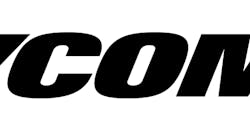Lycoming Engines Celebrates 85 Years of Aviation Innovation
Williamsport, PA – April 1, 2014 – Lycoming Engines, an operating division of Avco Corporation, is pleased to announce that 2014 marks its 85th year of innovation in aviation technology. Over the years, Lycoming has earned a reputation as a market leader by focusing on innovative and reliable piston engine propulsion solutions for aviation.
On April 3, 1929, a Beech-designed TravelAir biplane was the first aircraft to feature a Lycoming motor, the nine-cylinder, 215-horsepower R-680 radial, on successful trial flights. The engine powered the nation's earliest airlines. In over 20 years almost 25,000 R-680s were produced. Thousands of R-680s flew with the armed services before and during World War II.
Following the success of the R-680 and further engine development spurred on by the wartime effort, the company made aviation history with the world’s largest and most powerful reciprocating aircraft engine, the XR-7755. This engine was a 36-cylinder, single-crankshaft, liquid-cooled, radial-type power plant designed to generate 5,000 horsepower. Developed for the U.S. military, the experimental engine never flew due to the advent of jet propulsion and is now displayed at the Smithsonian National Air and Space Museum's Steven F. Udvar-Hazy Center as a testament to Lycoming's innovative heritage.
In 1938, Lycoming introduced the O-145, which became one of the first modern, high-production light aircraft engines. This first horizontally-opposed engine would form the basis of generations of Lycoming powerplants for numerous general aviation manufacturers. The world's first successful helicopter, built and flown by Igor Sikorsky on September 14, 1939, was powered by a four-cylinder 75-horsepower geared version of the O-145, designated the GO-145. In 1974, Lycoming started to provide the only FAA-certified aerobatic piston engines, serving not only performance pilots, but also the flight school training needs of many airline pilots.
Today, Lycoming continues to advance and improve piston propulsion technology in the aviation industry. “The Lycoming iE2 and DEL programs exemplify how
Lycoming continues to push the envelope in what is possible in piston aviation engine advancement,” Mike Kraft, Senior Vice President and General Manager, stated. “We are proud of our long-standing heritage, and even prouder of the work our team performs today to adapt and move aviation technology forward.”
As the company celebrates its 85th anniversary (1929-2014), Lycoming is proud to be able to continue its leadership in the aviation industry. “We are still headquartered in the same town where it all started,” said Kristen Samson, Vice President of Marketing and Product Management. “We are a long standing and proud part of the community in Williamsport, Pennsylvania, and some of our employees span over four generations. They take great pride in building these engines and really do build every engine as if they were going to fly it themselves.” Lycoming's 325,000 piston engines have powered more than half of the world's general aviation fleet. Today, the Lycoming factory produces the most complete line of FAA Certificated horizontally opposed, air-cooled, four-, six- and eight-cylinder engines available with power ranging from 100 to 400 hp. In addition, the company provides Experimental engines under the Thunderbolt brand as well as factory-engineered replacement parts that meet Lycoming's exacting original equipment specifications.
Lycoming will be celebrating its 85th anniversary with special events at EAA AirVenture, employee events and other exciting activities. Katie Bell, Communication Manager for Lycoming said, “Our brand is iconic in the industry. When we talk with customers they have so many wonderful stories to share about their time spent flying behind a Lycoming. We want to capture those stories because our customers are what have made our brand what it is today.”
Lycoming has developed a special website where people can share their Lycoming stories. Anyone who has a story you’d like to share about your Lycoming experience is invited to visit this website and submit their story, along with photos or a video. Lycoming will share many of these stories during this celebration year.
You can visit the Lycoming website http://www.lycoming.com and FaceBook page http://www.facebook.com/lycomingengines for the latest updates.

